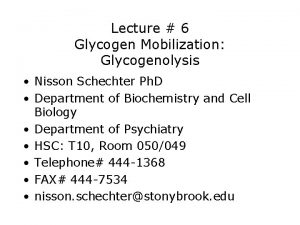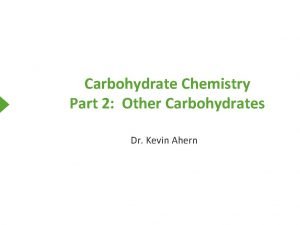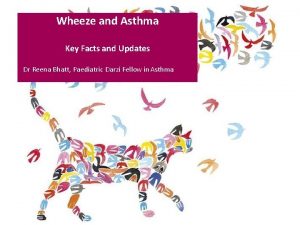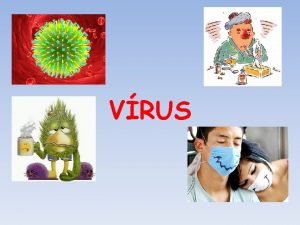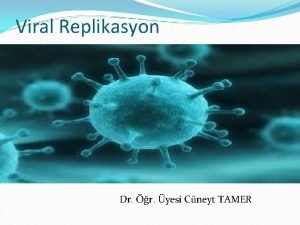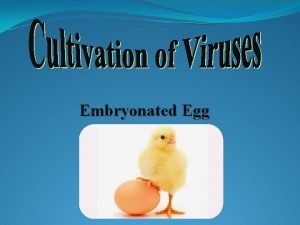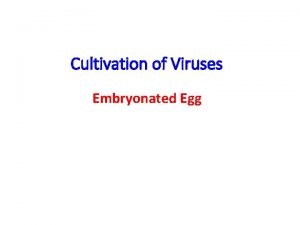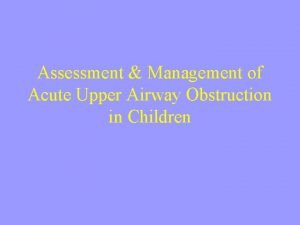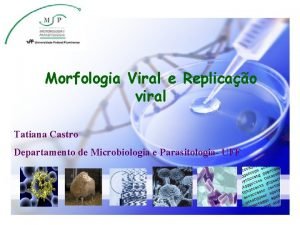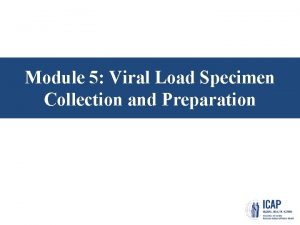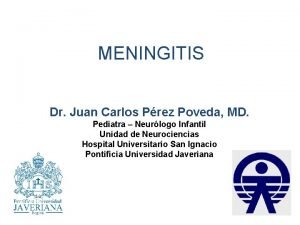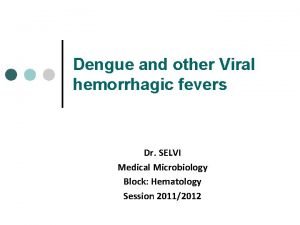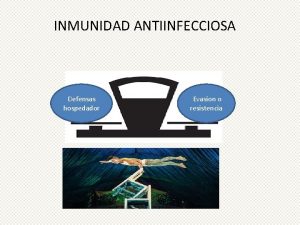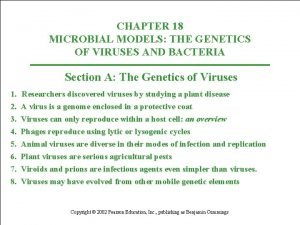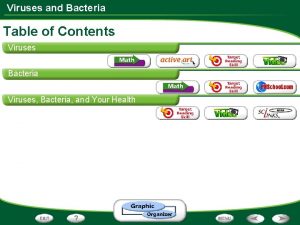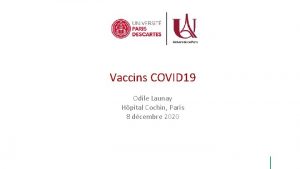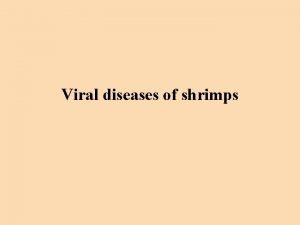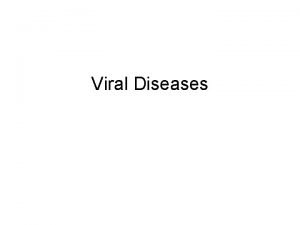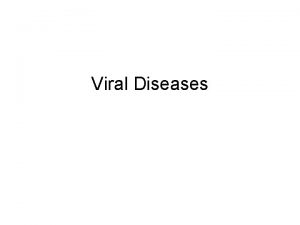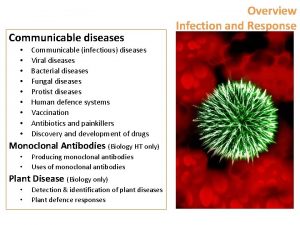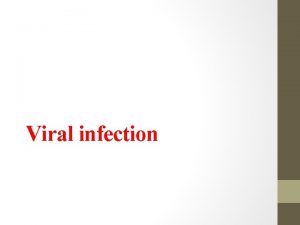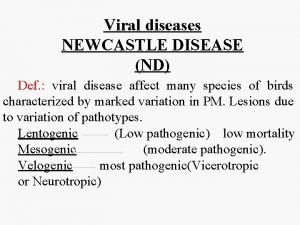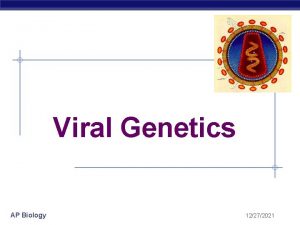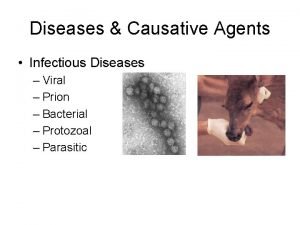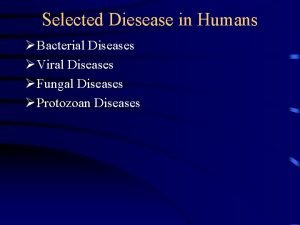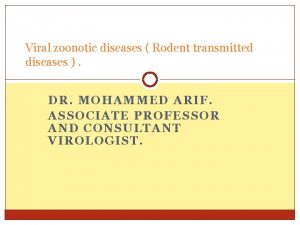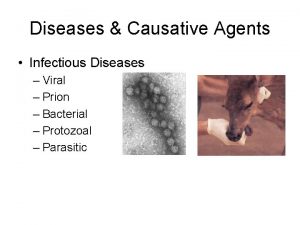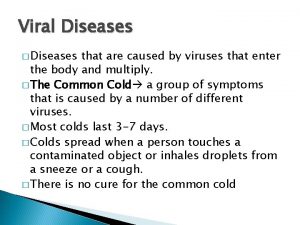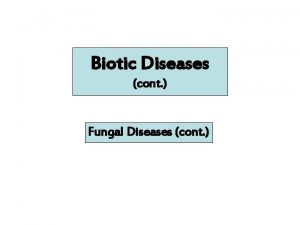Reducing The Effect Of Viral Diseases Introduction Viral





















- Slides: 21

Reducing The Effect Of Viral Diseases

Introduction: Viral infections of plants can cause necrosis, hypoplasia or hyperplasia and these effects can lead to symptoms such as • Growth retardation • Distortion • Mosaic patterning of leaves • Yellowing & wilting Often viruses are endemic to regions and cause only moderate crop losses. However plant viruses can be a major problem to agriculture with severe epidemics periodically causing losses added up to billions of dollars.

Types of viruses: There are many types of viruses. Here the names of viruses are according to the database of International Committee on Taxonomy of Viruses (ICTV). Table 1 highlights the main families & unassigned genera. The virus particle is composed of a nucleic acid genome, which can be single or multicellular structure (segmented). The genome is surrounded by § the capsid (coat protein), § replication related proteins (such as polymerases & helicases), enzymes/proteins, § and movement proteins (which facilitate the spread of the viruses). Some viruses also have extra, small RNA segments associated with them, called satellite RNA. These can alter the pathology of the virus infection.

Table 1: Genome structure of plant viruses Genome Structure Examples of families Notes RNA, singlestranded, positive sense (act as m. RNA directly) 70% of known plants viruses both nonsegmented & segmented Families: Bromoviridae, Comoviridae, Potyviridae. RNA single. Family: Bunyaviridae. stranded, negative Family: Rhabdoviridae. sense (RNA needs to be copied before it can act as m. RNA). Bunyaviridae possess a lipic envelope in addition to their nucleocapsid. RNA, doublestranded The plant members of Reoviridae have segmented genome. Family: Reoviridae

Genome Structure Examples of families Notes DNA. Doublestranded Family: Caulimoviridae. The only plant viruses of this group are caulimoviruses. DNA, single stranded Family: Geminiviridae one or two molecules of single stranded genomic DNA.

RNA Viruses: Tobacco Mosaic Virus: TMV is perhaps the longest-studied of all viruses for over 100 years. It has a genome composed of one single stranded linear RNA molecule (approx. 6400 bases) & has a t. RNA like structure at the 3’ end. The genome codes for five translated ORFs; of these, at least 3 ORFs are non structural proteins: 1. A 183 -k. Da protein 2. the 126 -k. Da protein 3. And the 30 -k. Da protein The two larger proteins are involved in the replicase complex,

§ The 126 -k. Da one having methyltransferase activity. § The 183 -k. Da protein is a read-through product of the 126 k. Da protein that also has a polymerase function. § The 30 -k. Da protein is a movement protein (MP). § The RNA also codes for a putative 54 -k. Da protein of unknown function, and capsid or coat protein (CP; 17 k. Da).

Comoviruses The genome of comovirus, cowpea mosaic virus (CPMV) is segmented that act as polycistronic m. RNA. It is split into two parts RNA 1 and RNA 2. RNA 1 has the coding sequences for: 1. The core polymerase 2. A protease 3. And a VPg (genome linked viral protein). The VPg is a protein that is attached to the 5’ end of the molecule and fulfills a cap function. The coding sequence for the two CP subunits, are found on RNA 2 along with the MP. Large polypeptides are made that represent the entire coding sequence. These are then cut into active proteins by specific proteases.

Virus entry & replication: To cause any infection, virus enter the host cell to replicate. All viruses have specific mechanism for their entry into cell and subsequent movement through the plant. Many viruses are transferred b/w plants by vectors such as nematodes, various arthropods (such as aphids, leaf hoppers, & whiteflies), and fungi. Once inside the cell, they uncoat & viral genetic material is then translated & replicated. Replication is carried out by the replicase complex encoded by virus. The ultimate stage of infection is the packaging of the replicated viral nucleic acid into capsids. The mechanism of translation & replication depends on the type of virus.

For a systemic infection, the virus must move from cell to cell via the plasmodesmata or the vascular tissues. However, the plasmodesmata is too small to allow the passage of virus. The viral MP may function by increasing the size of plasmodesmata. Dealing With Viral Problems: Farmers & the agricultural industry have dealt with viral problems by many ways, based on whether the viruses are normally present or not. Where viruses are endemic, the direct chemical control is not normally enough and it only works when viral infection is by insect or other vector with limited impact. Cross protection: Since 1920 it has been known that some plants infected with a virus showed resistance against infection by related virus. And these viral strains that show mild infection and protect the plant from infection by virulent strains, were obtained. Example: Cross protection is useful to cure most common disease of citrus tree caused by closterovirus citrus tristeza virus.

Plants such as potato, sweet potato and strawberry are vegetatively propagated so they are clonal material. The symptoms of virus infection may not be readily apparent during veg. growth , but they can have serious effect on yield and quality of the crop e. g. , potato leaf roll virus (PLRV) and potato virus Y (PVY) can reduce, tuber yield by 50 -80%. The most common systems that have been to reduce the virus are heat therapy and meristem trip culture. Recently antiviral chemicals have also been used. In principal, combinations of these technologies can be used to produce virus-free stocks.

Tests for detection of viruses: • Experts in the field can often find out the presence of virus by observing the morphological changes in plant. Yet this is not sufficient. • The plants are listed for the presence of virus with an enzyme-linked immunosorbent assay (ELISA) • To improve sensitivity and shorten the test time , lateralflow devices have been developed that can be used in the field by farmers. • Molecular biology techniques such as hybridization and the polymerase chain reaction (PCR) have been used and microarray approaches are underway. • PCR strategies have developed rapidly & now include real time PCR assays and multiplex reverse transcription PCR assays.

The transgenic approach against virus: First and still main, antiviral approach used, was pathogenic -derived resistance (PDR), originally known as parasitederived resistance. In PDR, pathogen genomic seq. are engineered into the host plant genome, seq. may be expressed at an inappropriate time, in inappropriate amount during the infection cycle and induce some form of resistance in the plant. The Mechanism of PDR: The mechanism is varied and complex; presence of pathogen seq. may directly interfere with the replication of pathogen or may induce some host defense mechanism.

Interaction b/w transgenic host plant seq. and invading virus can be categorized into 2 groups: 1. Interactions involve the synthesis of viral proteins 2. Interactions involve viral RNA 1. Interactions involving viral proteins: The first approach to viral resistance was transgenic expression of CP coding seq. CP mediated resistance was 1 st reported with a TMV • Imp. features of CP strategy are: q. There is some level of cross protection against related virus. q. In TMV & several other viruses, the level of resistance is related to the level of transgenic CP produced.

Table 2: Examples of CP mediated resistance Plant Source of CP gene Virus resistance exhibited to Alfalfa Al. MV (Alfalfa mosaic virus) Al. MV Citrus CTV (Citrus mosaic virus) CTV Potato PVX (potato virus X) PVY (potato virus Y) PLRV (potato leaf roll virus) PVX, PVY PLRV Tobacco TMV (tobacco mosaic virus) TMV, PVY, AIMV.

Much of the work with TMV is focused on understanding mechanism of TMV CP-mediated resistance (CPMR) and showed that: § Increased CP stability in transgenic plants, induce an increase in CPMR when interact with virus particles. § It is proposed that CP was actively inhibit the uncoating of infecting virus, so prevent translation & replication. CP may interfere with the spread of some viruses. § In addition transgenic TMV CP did not stop infection when plants were challenged with naked TMV RNA (without protein coat). In some cases other viral proteins (other than CP) are used. Such as genes for replication related proteins like replicase. Example: Potato plants contain Rep proteins show resistance and now have been commercialized.

Expression Strategies to improve resistance: To improve resistance against viral infection the CP gene is linked to specific promoters to show expression in transgenic plants. Example: A PLCV (potato leaf roll virus) replicase gene has been linked to either a 35 s promoter & introduced into potato. 2. Interactions involve viral RNA: Several approaches developed that do not require protein synthesis (translation), including satellite RNAs, antisense RNA, ribozyme technologies and gene silencing.

1. Satellite sequences: Plant viral satellite RNAs are small RNA molecules that are associated with a specific virus & unable to multiply in host cells without the presence of specific helper virus. The satellite is not required for virus replication but may affect disease symptoms. In many cases, its presence may reduce the effect of the virus. Such as transgenic tomato and tobacco plants expressing cucumber mosaic virus (CMV) satellite RNA and some reduction in disease was found. 2. Antisense RNA and ribozymes: Another strategy is the use of antisense RNA approaches. To produce an antisense-mediated resistance to viral disease in transgenic plants, constructs are designed that express a negative sense RNA molecule that hybridize with infecting virus positive sense RNA sequence.

Ribozymes are antisense catalytic RNA molecules capable of catalyzing the cleavage of the target sense RNA sequences. Similarly constructs are designed that express an antisense RNA molecule along with a short catalytic sequence. The aim is to: 1. Both block replication by the formation of a double stranded RNA (ds. RNA) hybrid 2. And to cut a key region of virus genome before it able to replicate. Limitation: Both the antisense RNA & ribozyme technologies have limited cross protection value unless the antisense seq. is designed against a very conserved region. So they met with mixed success.

Gene silencing/co repression: Post transcriptional gene silencing (PTGS) is most important phenomenon associated with RNA-mediated PDR. It is found in a wide range of organisms (plant, fungi, nematode worms. Humans) as an important regulatory system for preventing invasions by viruses and transposons. Co repression (gene silencing) is the phenomenon in which both the introduced gene and endogenous gene are turned off. Example: tobacco etch virus(TEV).

Some non PDR approaches: There are no. of non-PDR approaches used to induce virus resistance in plants such as: 1. Use of antibodies against virus 2. Targeting of virus translation by introducing some targeting genes e. g. , human protein kinase. This enzyme is induced by interferon in humans & inhibits the viral replication. 3. The human gene has been fused to an Arabidopsis wound inducible promoter-blue copper containing binding protein gene and introduced into Tobacco plants. It provide significant resistance against CMV, TMV and PVY.
 Bials test
Bials test Reducing and non reducing end of glycogen
Reducing and non reducing end of glycogen Barfoid test
Barfoid test Reducing vs non reducing sugars
Reducing vs non reducing sugars Viral induced wheeze vs asthma
Viral induced wheeze vs asthma Replicação viral ciclo lítico e lisogênico
Replicação viral ciclo lítico e lisogênico Section 24-1 viral structure and replication
Section 24-1 viral structure and replication Viral replikasyon basamakları
Viral replikasyon basamakları Egg inoculation diagram
Egg inoculation diagram Viral inoculation in embryonated egg
Viral inoculation in embryonated egg Viral inoculation in embryonated egg
Viral inoculation in embryonated egg Spasmodic croup vs viral croup
Spasmodic croup vs viral croup Dea anggraini viral
Dea anggraini viral Decapsidação
Decapsidação Viral load sample collection
Viral load sample collection Tratamiento meningitis viral
Tratamiento meningitis viral Causes of viral hemorrhagic fever
Causes of viral hemorrhagic fever Ciclo viral
Ciclo viral Capsid capsomere
Capsid capsomere Viral
Viral Viral recombination
Viral recombination Vaccins à vecteur viral
Vaccins à vecteur viral

